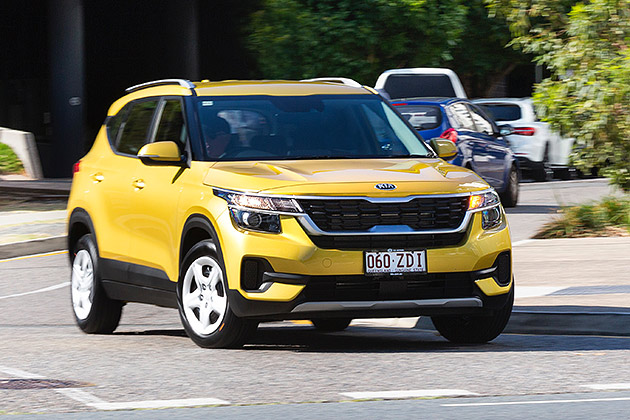Kia Seltos Sport
With the ever-increasing demand of the Australian public for SUVs, this category is growing at a rapid rate. As the the entry-level into the SUV market, the majority of vehicles sold in this segment are 2WD, so AWD models have been excluded from the judging. The targeted buyers of these little wonders are two-fold: those empty nesters in the older age group who are looking to downsize from a larger family car and for which having a slightly higher seating position makes ingress and egress easier; and those at the other end of the spectrum who haven’t started a family and want the versatility an SUV body for their pre-family adventures.
For the entry-level vehicles into the SUV class, each are fairly well appointed with all-important connectivity, and the ease-of-use for most major functions is hard to separate. Right through design and function evaluation, each in turn would gain a point here and then lose one there against its rivals, so consistency was going to win the day.

It’s here that the winning Kia Seltos started to create a gap between the second-place Hyundai Kona Go and its stablemate Venue Active in third place. Every judge who drove the Seltos was pleasantly surprised – to the point that if they originally blind-tested this vehicle (covered up all the badges) some would likely have guessed it was premium brand. It definitely had an upmarket feel to it and produced the top score for build and finish quality.
Value for money was never going to decide this one as there’s only around a $2000 price difference between the three SUVs and there’s little difference in running and repair costs or fuel consumption, however the Seltos gets a small boost from good warranty and standard features scores.
The Seltos also delivers a category-leading ergonomics experience. A huge 10.25-inch infotainment touchscreen is extremely clear and intuitive to use, and it has superior door, dash and seat materials that are mostly soft to the touch. Space in the second row will comfortably seat two adults over long distances.
There’s very little separating each of the podium finishers in on-road performance. Both the Seltos and Kona have 2.0-litre petrol engines, while the Venue gets a 1.6-litre. Predictably the Venue, with its smaller capacity engine, gives some ground away to others in terms of performance, however it isn’t streets away. Disappointingly, there’s no payback at the bowser as the Venue is also equal highest of the finalists with the Kona for official combined cycle fuel economy figures.
The two Hyundais feature a six-speed auto transmission, but the Seltos uses a continuously variable transmission (CVT) that’s one of the best of its type, giving an almost perfect imitation of a traditional auto transmission. The Seltos also excels in cabin insulation, with driveline noise well suppressed from occupants.
Prospective buyers would surely be happy purchasing either of the trio, but the gong deservedly goes to the Kia Seltos Sport which made a long-lasting impression on all judges.
| Indicative drive-away: | $28,990 |
|---|---|
| Body type: | Wagon |
| Fuel economy/fuel type: | 6.8L/100km, unleaded petrol |
| Engine/transmission: | 2.0L, CVT |
| ANCAP: | 5 stars |
